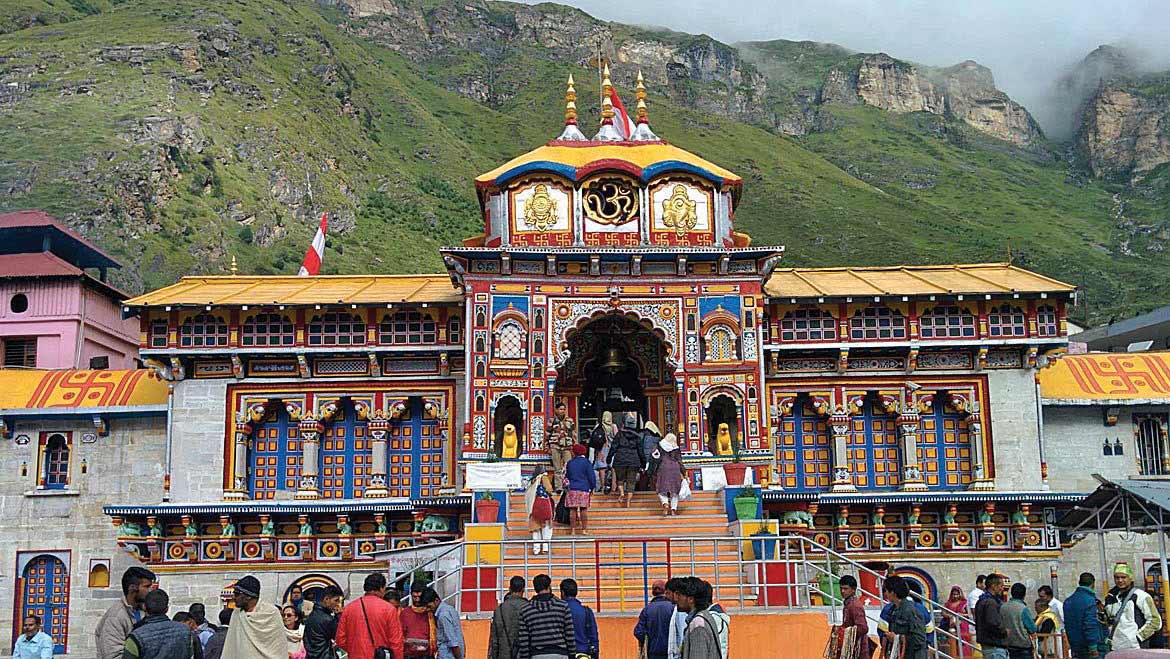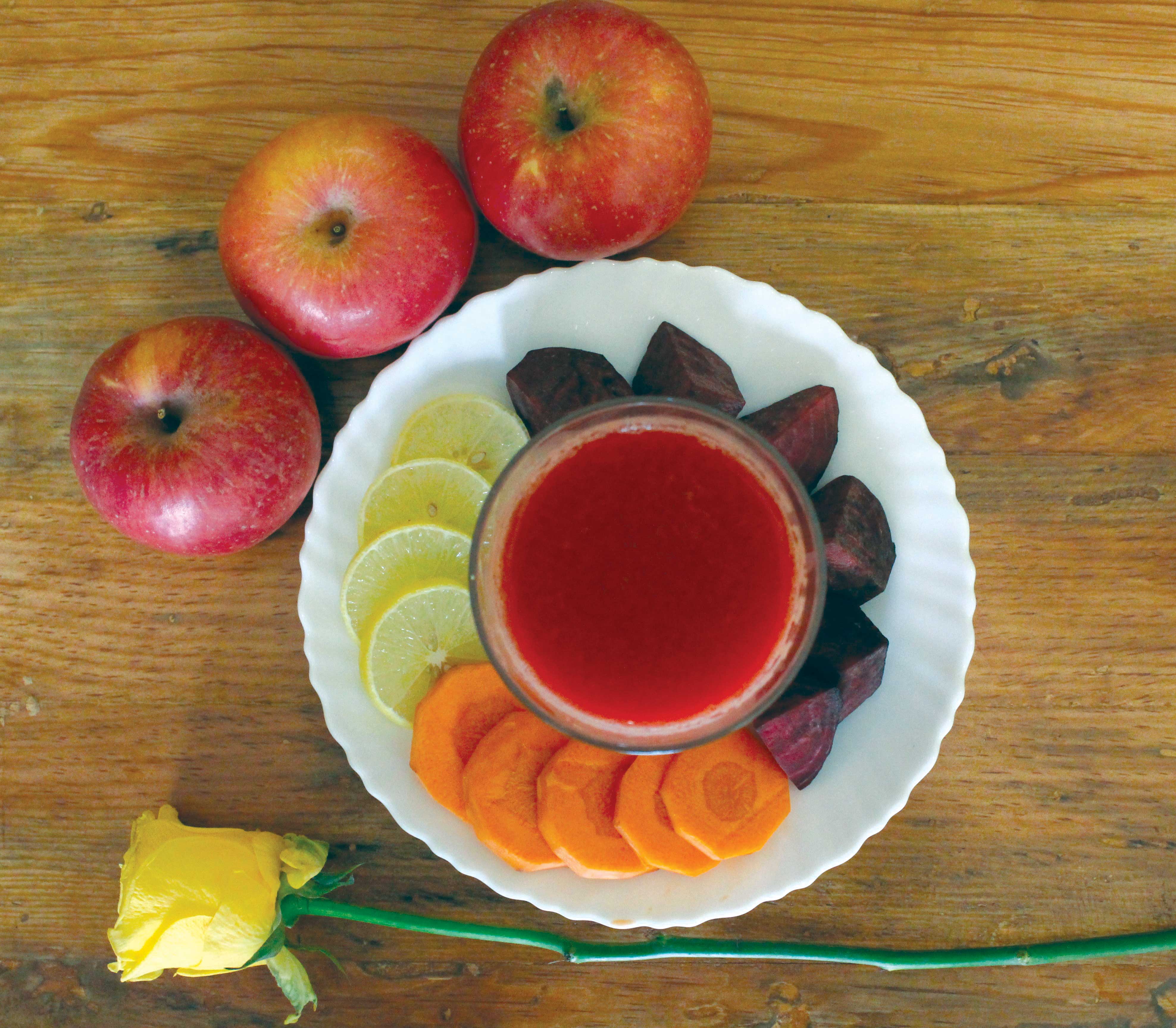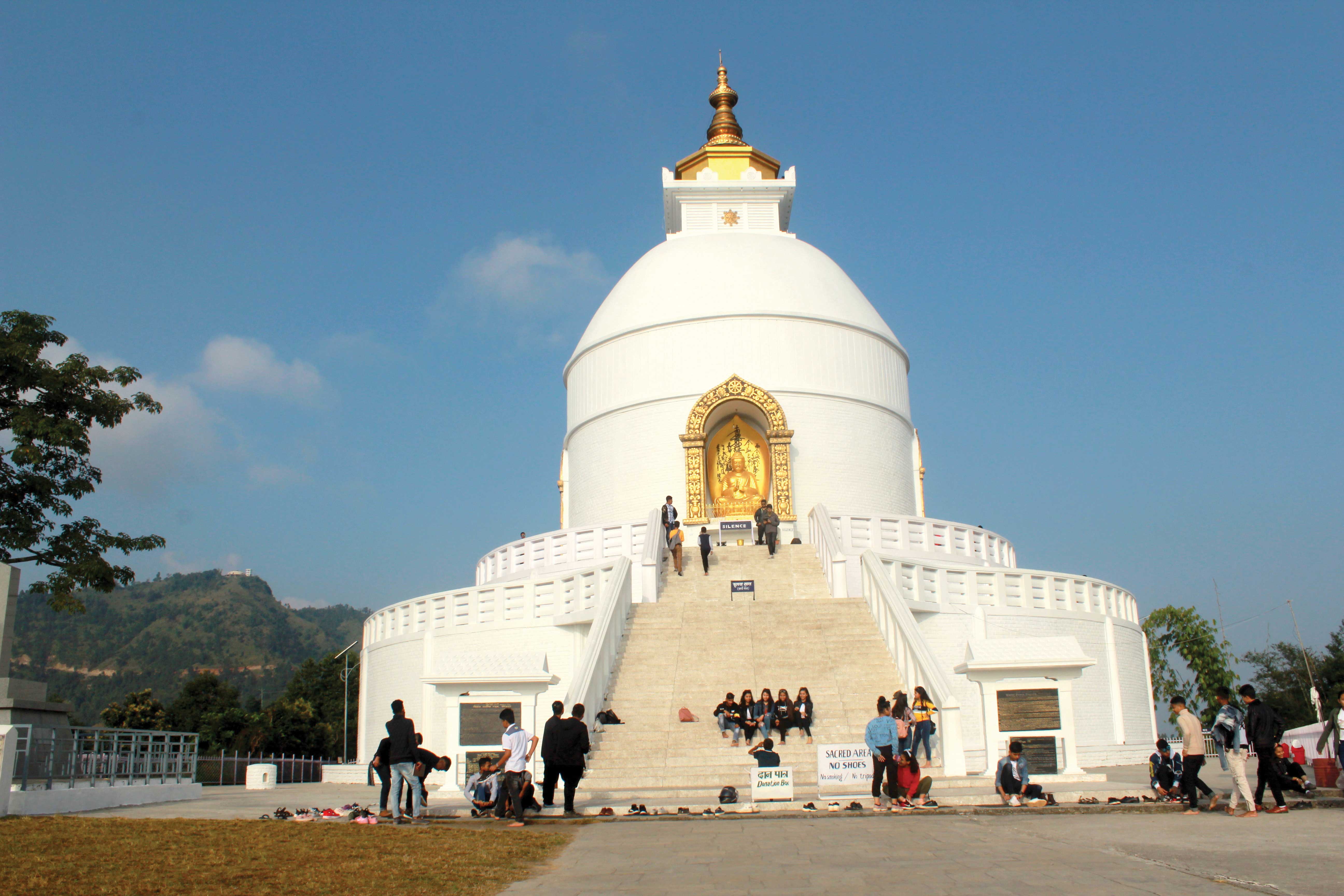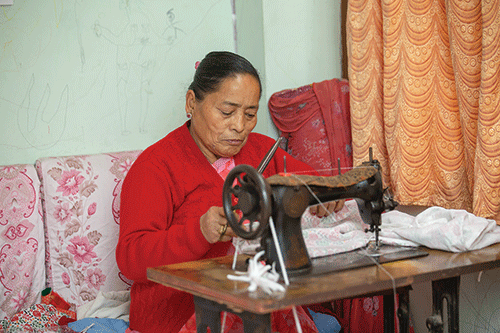Better view of the Himalayas than Pokhara and a fair share of mythology make Dhamphus an enjoyable hike. Why else to go? Find out.
It sounded strange, if not incredible. I scanned the small pond for any sign of a leaf or a twig, but there was none, even though trees with outstretched branches stood at the fringe of the water. “That’s how clean the pond remains all round year, free of leaves and fallen twigs,” says Dev Kaji Gurung.
Dev continues, “The trees do shed leaves and dead twigs on the water. But come evenings, birds that flock by the pond pick the fallen leaves and twigs off the water. It’s been like this since the time of our great grandfathers—and theirs.” That’s the Neghu Baraha pond in Dhampus, a small Gurung village, some 23km north-west of Pokhara. Dev Kaji Gurung owns Hotel Greenland (061-690169) in Dhampus.
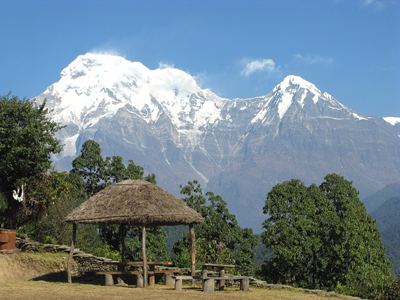 Rolling hills
Rolling hills
After a few days of hectic sightseeing in the Lake City of Pokhara, a trip to Dhampus (1770m) is like being whisked away from civilization to open country and rolling hills. The small village (population < 7000) is nestled snugly on a brow of a hill punctuated by lush forests, corn and millet fields and velvet green rice terraces (in July-August; they turn a lovely golden in the autumn) that cascade down to the narrow Mardi River valley.
What proves to be an absolute knock-out is the panoply of majestic peaks that dominates the northern skyline. The staggering snow-clad array includes the 7th and 8th highest peaks in the world, the Dhaulagiri (8167m) and the Manaslu (8156m), closely followed by the whole shebang: Annapurna I (8091m), Annapurna II (7937m), Annapurna IV (7525m), Hiunchuli (6441m), Ganesh Himal (7446), Lamjung Himal (6586m), and the iconic two-pronged Machhapuchre (Fishtail Mountain, 6993m). The claim the locals make that Dhampus offers the widest view of the Annapurna range, is no idle boast. Given a clear day, you can also see the Phewa lake to the south from a good vantage point.
Although a dirt road opened some three years ago, the village looks unsullied by the trappings of break-neck development. Lush hillsides, old mud and stone houses with slate roofs, cultivated lands and that calm laidback ambience speak for it. The only thing you’ll miss, if you are hiking, is the distinct peal of bells, which informed of (before the road came in operation) mule trains, one after another, herded by muleteers, as they made their way up or down the trail.
The first thing that strikes you on arrival in Dhampus is that every other roadside house is either a tea house or a lodge. The hospitality business thrives in the little village. What Nagarkot is to Kathmandu, Dhampus is to Pokhara, said a friend. The lofty peaks though, are closer from Dhampus.
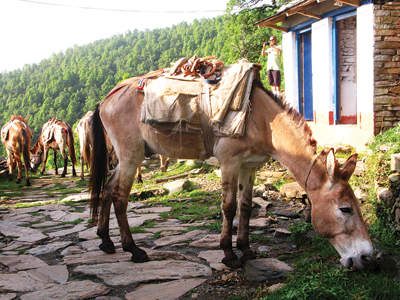 Gateway to Annapurna bonanza
Gateway to Annapurna bonanza
“For no less than 20 years, Dhampus, served as the only access route to the Annapurna trek hotspots like Ghorepani, Ghandruk, Poonhill, and epic trails like the ABC (Annapurna Base Camp), the MBC (Machhapuchre Base Camp), the Annapurna Sanctuary, and the then remotest outpost town of Mustang, Jomsom. The Dhampus trail did brisk business at pace round the year with foreign backpackers, village people and a sprinkling of domestic weekenders. With the Baglung highway in operation, the number, however, dropped drastically as newer trekking routes opened,” says Ananta Prasad Bhandari who runs the Green View Restaurant in Pothana. “With more domestic tourists in recent years coupled with the opening of the trekking route to Mardi Himal (5587m, south flank of the Macchapuchre) in the Annapurna region (7600 sq km), things have started to look up in Dhampus,” adds Annanta, the only Brahmin face I saw in the village dominated by the ethnic Tamus.
For the hike the starting point is Phedi, a 45-minute drive from Pokhara on the Baglung Highway. It takes two and a half hours (locals make it in one) at most, on the winding foot trail uphill that passes through terraced fields, cluster of woods and tiny villages like Jamune, Dharne, and Pokhare. The steep spiraling stone steps at the start of the trail might scare you—it does everybody. Don’t worry - the climb gets milder as you press ahead. Rated as moderately tough, I recommend the short hike for people of all ages. I ran into an eight-year old foreign kid taking it all in his stride along with his parents.
If you’re travelling on a vehicle, try following the contour of the rolling hills to your left as the Bolero jeeps speed by the sprawling town of Hyangja. The undulating forested slopes curiously transform into the silhouette of a reclining Buddha facing the sky, only for a fleeting moment though. The dirt road to Dhampus starts off a kilometer farther along Phedi. The bumpy ride is far from what you’d call a comfortable journey as the road is rutted and most of the sections are literally a bed of stones and rocks. Nonetheless, as the driver skillfully maneuvers the jeep on the rugged track past open countryside, wooded hills, scattered cluster of cottages, fleeting glimpses of village life, and children waving their bye-byes, you soon forget your discomfort. Dhampus is an hour away.
If you’re planning an overnight stay (most Nepalese do), start early after breakfast from Pokhara, regardless of whether you’re hiking or taking a ride. On arrival, check into a hotel, freshen up and take a leisurely lunch. A nap might be in order. But all this time, notice the skowly changing northern skyline with the lofty giants. The best time to view the mountains is at sunrise, unhindered by clouds or haze. After your afternoon tea, you get plenty of time to stroll around the village, and observe the local Gurungs and country life in general. Don’t forget to spend a little time at the enigmatic Neghu Baraha pond—maybe you can dispel the local myth.
A small temple dedicated to Lord Vishnu stands by the historical pond. Apart from the locals, the shrine attracts devotees from near and far. The pond is also an old watering hole for wild animals and birds. The construction of an eco-park in memory of the great stalwarts of wildlife and conservation, late Dr. Harkha Gurung, Dr. Chandra Gurung and Nima Sherpa (all three died in the same plane crash) is underway next to the pond.
Notice the changes in village life too; the fashion fever of the city seems to have taken a firm grip on the youngsters of Dhampus too. The young wear jeans and skirts, many with headphones tucked into their ears.
Bhangra & cummerbund
The elders however, haven’t broken away from tradition. It’s endearing to see a Gurung gentleman in his native white skirt (known as bhangra, made out of fiber from nettle brush) held up by a wide belt or cummerbund, waist-coat, a cotton sack-bag slung on his back, its straps crisscrossed against the chest and the ubiquitous Nepali topi. A Gurung woman is more heavily clad: a sari or a pleated skirt, a blouse (mostly maroon in color) tied at the front, a cummerbund (different from the men’s version), a shawl, a head cover and plenty of jewelry: gold, coral, or glass-bead necklace, earrings, nose ring, bracelets and bangles.
Dhampus’ own jewels are the mountains. There’s nothing like catching the sun as it sheds its first rays on the snow-clad peaks. For that, you have to be an early riser. All you got to do is ask the hotel attendant for a wake-up call, with tea, if you prefer. Make it a point to get up at first light, a little before dawn when the mountains are still vague shadows. The freshness, the nip in the air (if you happen to be there in October) and the calm, all add to your excitement. The big moment arrives—the far eastern horizon starts glowing, shooting up an ethereal glow heavenwards. Seconds later, the glowing tip of the sun peeps out from behind dark mountains against grey skies. Slowly and softly, the light caresses the craggy snowy pyramids until they turn a golden hue—the sun no more than a flame-red orb, moments later. “If you miss that, it’s as good as not going to Dhampus,” a friend had told me once. Later, treat yourself to a hearty breakfast, and then take a walk (25 minutes) to Pothana (1974m). The stone-paved trail runs through lush forests that include oak, magnolia, rhododendron, sandalwood, needle wood and pine. The woods offer plenty of orchids too, sprouting from moss and lichen covered tree boles and branches. Bird watchers better keep their binoculars on the ready. Don’t be surprised if a covey of chir kaliz pheasants startle you as they cross your path and scurry away for cover. Frequent sightings of barking deer on this trail are also reported.
Surrounded by thick jungle, Pothana is a handful of shacks that double as home-stays and tea houses. Given its elevated location, the place affords a better view of the peaks than the main centre in Dhampus. Come March-April, the forest turns into a riot of colors as rhododendrons in full bloom blanket the forested hills. “Dhampus is home to six varieties of rhododendron: red, purple, white, pink, deep red and maroon,” says Ananta. After Pothana, a twenty-minute walk up unbroken forests takes you to the Australian Camp. Clusters of tiny settlements, home stays and tea houses mark the place. What stands out most is a large green turf that faces the Annapurna range. Curiously, the local story has it that the place previously known as Thulo kharka (big pasture), came to be called the Australian Camp after a visiting Australian laid grass on the vacant plot with seeds brought from his country.
“History has it that Dhampus, previously called Tome Le (meeting ground in Gurung dialect), once served as a baise rajya (a 22 district principality) ruled by A king,” says Ambar Gurng, owner of the Paradise View Hotel (061-690169). The ruins of an old fort can still be seen if you climb to the top of a wooded hillock called the kot (fort). A Bhagwati shrine, where locals offer goats and buffaloes, stands next to the ancient ruins. If you’re on a one-night stay itinerary at Dhampus, and are hiking, instead of back-tracking the same route, try the trail back via Dhikur Pokhari-Sarangkot or Kande. It’s worth the sweat, as the trail winds down forested hills and a beautiful stretch of country. From Kande, you can catch a bus to Pokhara.
Local exotica
Every destination is known and remembered for its history, ambience, local myths, and landscape. So is it by its local flavors, its food. Make a day of it by trying a dash of local exotica; the millet dhindo (cooked dough), lamb sukuti (dried meat), locally grown sag (spinach) accompanied by an aperitif, the jhwainkhatte (a local blend of millet alcohol poured into a sizzling pan of rice grain fried in ghee). Do be warned though; the liquor is strong and can floor you with a few shots.
Why not round off your getaway by stopping at the Neghu Baraha one last time? I did, but still couldn’t trace floating leaves or twigs on the water, even after spending two days in Dhampus. Instead, two fat buffaloes wallowing in the water looked back dolefully at me. So, does the Neghu Baraha myth still hold? Find out.
What to remember
For a small village town, Dhampus boasts of almost 17 lodges. Reservations can be made from Pokhara. The lodges (Rs. 250-1500) offer modest amenities but aren’t lacking when it comes to culinary specialties, from basic dal-bhat to burgers and steaks. Some even boast Internet access. Every hotel abides by menu rates set by the local Lodge Management Committee.
Access to Dhampus on a vehicle is easy too, whether on vehicles (Bolero jeeps shuttle people from Hari Chowk, Bagar, Pokhara, to Dhampus and back. One-way fare is Rs.100) or a more enjoyable hike.
The best time to visit Dhampus is October-November; if you’re bent on viewing the mountains.
If you can extend a day or two, you can strike off to Ghandruk (another Gurung village) and stay the night. If your wanderlust nudges you on, consider the 3-4 day trek from Ghandruk to ABC (Annapurna Base Camp) and MBC (Machhapuchare Base Camp). Hiring a guide and logistic support is advised. The package can also include the Annapurna Sanctuary.


